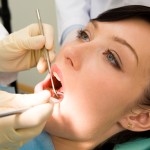
Determining a patient’s risk of developing caries in the short-term is an important element of clinical practice. Typically a wide range of factors, diet, health, oral health and hygiene together with fluoride use are combined to derive a subjective clinical opinion of an individual’s risk. Algorithm based software is now being developed to assist this process. The Cariogram which uses nine caries related risk factors is an example.
The aim of this study was to validate baseline caries risk classifications according to the Cariogram model with the actual caries development over a 3-year period in a group of young adults living in Sweden.
Methods
All 19-year-olds registered with selected clinics were invited to participate. The regular dentist or dental hygienist under optimal light and cleaned, air-dried teeth carried out clinical visual-tactile examination, including bitewing radiographs. Caries experience and prevalence was measures as DFT/DFS. Health information and habits were recorded using a questionnaire, and salivary mutans streptococci; lactobacilli and buffer capacity were estimated using selective chair-side kits.
Computerised caries risk assessment was undertaken using the Cariogram. Five categories were used.:-
- Very low risk = 81-100% chance to avoid caries;
- Low risk = 61-80% chance to avoid caries;
- Moderate risk = 41-60% chance to avoid caries;
- High risk = 21-40% chance to avoid caries; and
- Very high risk = 0-20% chance to avoid caries.
Neither the patient nor the patients’ dental teams were informed of the risk level.
The main end point was the number of new carious lesions assessed at 3 years. All preventive and treatment decisions during the 3-year period were the sole responsibility of the patients’ dental team.
Results
- 1295 patients out of a possible 1699 enrolled in the study.
- 313 patients (24.2%) were lost to follow up.
- Dropouts had significantly higher mean DFT/DFS. The percentage in each risk category at baseline and follow-up is shown in the table below.
| Cariogram risk category | Base line % | Follow-up % |
| Very low risk | 23.3 | 25.6 |
| Low risk | 32.7 | 34.1 |
| Moderate risk | 26.5 | 25.3 |
| High risk | 9.0 | 7.5 |
| Very high risk | 8.4 | 7.5 |
- Patients in the higher risk groups developed more caries and this was significant for all except the two highest risk groups.
| Cariogram risk category | % With no caries increment at 3 years |
| Very low risk | 85.3 |
| Low risk | 71.3 |
| Moderate risk | 50.4 |
| High risk | 36.5 |
| Very high risk | 44.5 |
- The sensitivity, specificity compared with a risk assessment scheme used in Public Dental Service are shown in the table below together with calculated Likelihood ratios
| Cariogram risk category | Sensitivity | Specificity | Likelihood ratio (LR) |
| Very low risk | 0.892 | 0.335 | 1.34 |
| Low risk | 0.613 | 0.71 | 2.11 |
| Moderate risk | 0.256 | 0.906 | 2.72 |
| High risk | 0.119 | 0.948 | 2.29 |
Conclusions
The authors concluded:-
Within the limitations of the present study, the computer-based Cariogram did not perform better than a caries risk assessment scheme based on past caries experience and caries progression, over a 3-year period in young adults.
Commentary
A recent systematic review by Mejàre et al ( Dental Elf 16th Oct 2013) suggested that there was little evidence for caries assessment systems. This prospective cohort study is a good method of assessing the effectiveness of the Cariogram. The sample while large may not have been completely representative of the population as only 76% of those invited decided to participate. These could potentially have been from the higher risk groups, which also demonstrated a higher drop out over the study period. The Cariogram did stratify the sample and there does appear to be some correlation between the risk ranking and caries increment overall. The authors have compared the sensitivity, specificity and negative and positive predictive values of the Cariogram with the standard service caries risk assessment scheme, which is detailed in another publication. Calculating the likelihood ratio provides an indication of the Cariogram’s potential as a test. A test with a likelihood ratio of 1 is of little diagnostic value while likelihood ratios of 10 or greater indicate a strong positive test.
Links
Mejàre I, Axelsson S, Dahlén G, Espelid I, Norlund A, Tranæus S, Twetman S. Caries risk assessment. A systematic review. Acta Odontol Scand. 2014 Feb;72(2):81-91. doi: 10.3109/00016357.2013.822548. Epub 2013 Sep 2. Review. PubMed PMID: 23998481.
Dental Elf 16th Oct 2013 – Limited evidence available for caries risk assessment systems

Caries risk assessment using the Cariogram model in young adults http://t.co/cRr5Ipkxke
Don’t miss: Caries risk assessment using the Cariogram in young adults http://t.co/xVK1cKZCRq